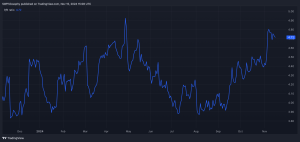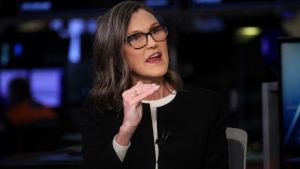The BT (LSE:BT.A) share price gave back some of its 2024 gains on Thursday (25 July) — results day.
The stock had been pushing higher since May with the market reacting positively to CEO Allison Kirkby’s long-term vision for the company.
The telecoms giant also received a boost from Mexican billionaire Carlos Slim — once the richest man in the world. Slim took a 3.16% stake in the FTSE 100 stock on 12 June.
So, what’s in the Q1 earnings report and what does it mean for investors?
Outlook retained
Compared to other results reported on Thursday, this one was pretty uneventful.
BT Group reported a 2% decline in adjusted revenue to £5.1bn for Q1 2024, primarily due to legacy contract declines, reduced low-margin sales, and contraction in its business portfolio.
The company’s reported profit before tax also fell 3% to £520m.
Despite these challenges, BT saw a 1% increase in adjusted EBITDA to £2.1bn, driven by transformation efforts and tight cost control.
The company achieved record FTTP (fiber-to-the-premises) build, passing over one million premises in the quarter at an average rate of 78,000 per week.
Its FTTP footprint now stands at 15m, with 4.2m rural premises reached. The company’s FTTP customer base has now passed 5m with orders up 29% year-on-year and take-up rate at 34%.
Despite the revenue decline, BT maintains its full-year outlook.
One of the most undervalued stocks?
I haven’t come across a stock on the FTSE 100 that trades at such a large discount to its average share price target as BT.
The average BT share price target is £1.94, and that’s 39.38% above the current share price. This is consensus opinion of 18 analysts covering the stock.
Currently, there are nine Buy ratings, five Outperform ratings, two Holds, one Underperform, and one Sell rating.
This indicates that the company is undervalued.
Interestingly, the spread is pretty huge. The highest share price target is £2.90, and the lowest is £1.10.
And this speaks to the fact that BT is going through a transition. For years it has spent billions on FTTP rollout. With a bloated workforce and huge CAPEX, the road to profitability hasn’t been clear.
However, that has started to change. The company is reducing its workforce as fibre rollout peaks, and Kirkby has promised £3bn of savings every year through to the end of the decade.
FTTP is also cheaper to operate, and will mean BT’s maintenance workforce will decrease significantly. Traditional copper wiring degrades much faster.
What it all means
I missed a great chance to buy BT stock in May around £1. I went on holiday and took my mind off the ball.
Nonetheless, I’m still rather optimistic at this higher price point.
Analysts point to a near 40% discount and there are potential supportive trends coming from the Labour government’s economic policies, increasing the number of homes eligible for broadband connections.
I haven’t quite decided whether I’m going to add this stock to my portfolio, but I’m going to keep a close eye on BT.
This post was originally published on Motley Fool







